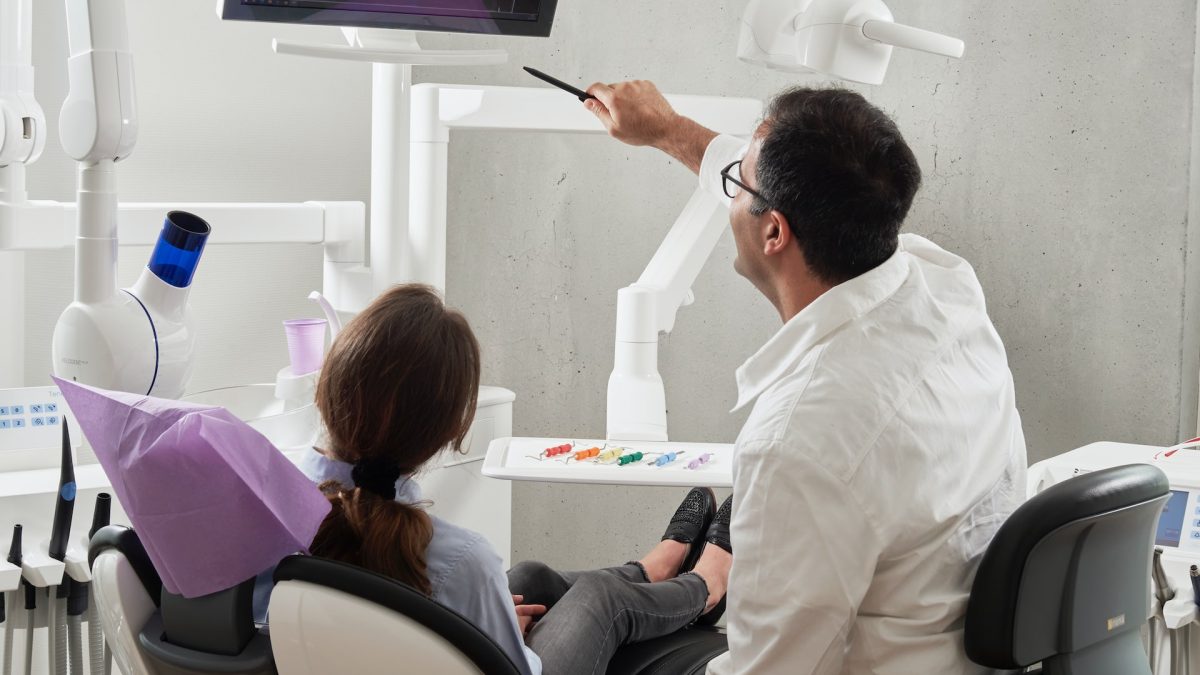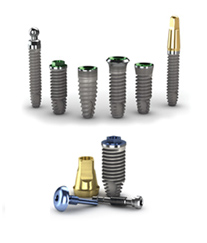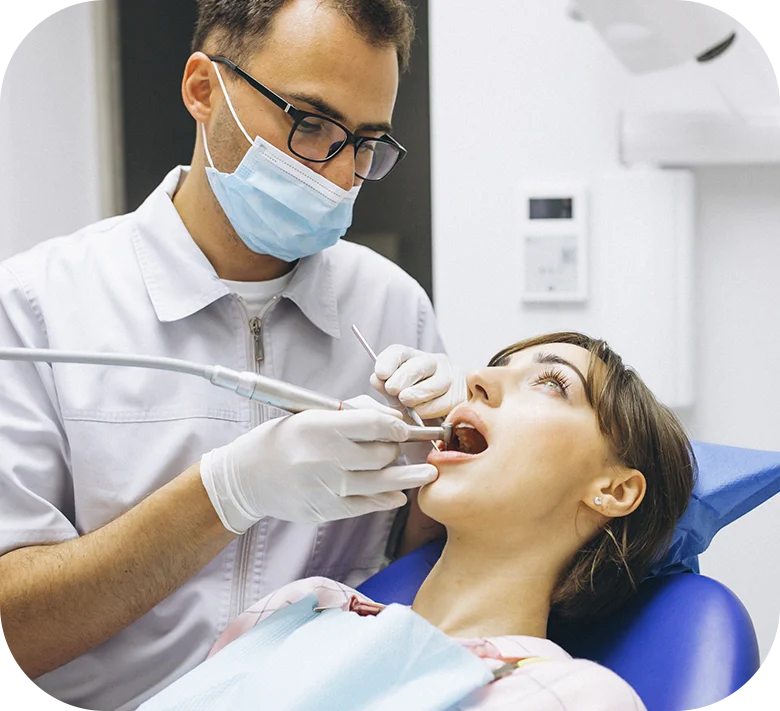Osseointegrated Implants

Future Dental Medicine
September 17, 2014
Titanium – The secret behind dental implants
September 30, 2014Osseointegrated Implants

Osseointegrated Implants For Craniofacial Prostheses
Over the last decade, there has been a very rapid development in technical possibilities to provide patients with facial prostheses retained by skin penetrating implants after ablative tumor surgery. This chapter will present some background information on the surgical technique of Osseo integration, and the technical procedure for preparing a facial prosthesis. The use of Osseo integrated implants in the patient who has undergone radiotherapy will also be reviewed.
HISTORICAL BACKGROUND
The literature indicates that facial prostheses were used in China as early as 2300B.C. In ancient Egypt, prostheses were used to cover facial disfigurement. One of the most well-known people to wear a nasal prosthesis was the Danish astronomist Tycho Brahe, who died in 1601. Brahe lost his nose in a duel and wore a prosthesis made of silver; the most commonly used prosthetic material at that time. In the mid-19th century, prostheses were made from leather, enamel, and porcelain. After the Great War in Europe, a large number of soldiers came back with facial defects, and the first organized services to provide these soldiers with prostheses were established in Germany and the United Kingdom. Papier-mâché and gutta-percha were introduced to make the prosthesis more natural looking and also to reduce the weight. Subsequently, the same technique was used to help patients who had defects secondary to infectious diseases such as leprosy and also tumor patients. Bulbulian, a dentist based at the Mayo clinic in Rochester, Minnesota, was the first to advocate the use of a latex compound. After World War II, acrylic was introduced as a reliable material but had the disadvantage of being very hard.
Silicone rubber was a new material introduced in the late 1970s that could be made soft to follow the defect perfectly. For the first time, the edges could also be made thin. However, when such silicon prosthesis was kept in place with glue, the edges soon became discolored and lost their softness.
There are two very important properties that prosthesis must possess. It must approximate the defect area both in shape and color, and the retention must be good enough to keep the prosthesis safely in place during daily activities. Glue is frequently used for retention but also has disadvantages. The skin and the prosthesis have to be cleaned following removal, and exact positioning when placing the prosthesis is not very easy. Sweating will impair the adhesive properties of the glue. When the prosthesis is attached to glasses, the cosmetic result is poor due to the weight of the prosthesis, which causes a gap between the surgical defect and orbit.
One of the few reports on the use of craniofacial prostheses was published in 1978 by investigators from Rose-well Park. In this study, patients who had undergone craniofacial surgery were rehabilitated with acrylic prostheses secured with adhesive. Less than 50% of the patients used their prostheses long term, and fewer could tolerate wearing their prostheses for the entire day. Compliance was decreased because of skin irritation and poor cosmetic with the prosthesis in place.
Since 1979, we have used silicone rubber prostheses retained by Osseo integrated, skin penetrating implants made from commercially pure titanium for the rehabilitation of patients with post-tumor surgery defects. Since that time, more than 300 patients with defects of the external ear, orbit, nose, and midface have undergone implant surgery in our Implants Unit.
OSSEOINTEGRATION
The term Osseo integration was coined by professor P.I.Branemark in the 1970s to describe a direct contact between living haversian bone and a loaded implant surface. Branemark and associates have identified a number of prerequisites necessary for Osseo integration of titanium implants. The technique of implantation must be carried out with a high degree of precision to achieve initial implant stability. The implant itself must have properties that are compatible with the host tissue to prevent rejection. Several factors important to Osseo integration have been identified: the type of implant material, structure of the implant, implant surface, implant site, bone quality, surgical technique, and loading conditions. A reference for a more comprehensive review can be found in the text entitled Advanced Osseo integration Surgery.
INDICATIONS
To achieve success with an implant retained craniofacial prosthesis, the surgeon must be familiar with the indications and surgical technique which, although not technically demanding, require close attention to detail. The surgical procedure can often be performed under local anesthesia on an outpatient basis. Implantation can often be performed during the same operation as the ablative procedure. When placed in the mastoid process at the time of auriculectomy, the patient can be fitted with prosthesis 5 to 6 week after surgery. Implants may also be placed at the time of orbital exenteration but should be left undisturbed for 6 months.
CONCLUSION
Today, the use of titanium implants for retention of craniofacial prostheses is an established treatment modality. Plastic surgery procedures should of course contemplated, and implant retained prostheses should be regarded as an option. We feel that this option should be available at major cancer centers. One of the advantages is that the surgical procedure from the patient’s point of view is minor and can often be performed under local anesthesia. Another advantage is that the result is predictable. According to our experience, one of the most important advantages of this technique is the short time between tumor surgery and the time that the patient can return to his/her everyday social activities. This is important for elderly patients who often do not like an extended time schedule that involves multiple surgeries. We also feel that the cosmetic result often is superior compared with plastic surgery. This is especially true when an external ear or an eye, with or without maxillectomy, has been sacrificed.
Before this type of rehabilitation protocol is introduced, there are some factors we feel are of great importance. Close cooperation and understanding must exit between the surgical team and the team working with the anaplastologist. The patient only benefits if both teams co-operate. The teams must be aware that they are assuming a commitment for the rest of the patient’s life. The patient and his/her family must understand the concept of “prosthesis” and be willing to take part in a follow-up protocol. The selection of and information given to the patient is thus extremely important. Informing the patient that the prosthesis has to be remade at intervals should also be stressed during the preoperative information session. After fitting of the prosthesis, the patient has to make outpatient visits twice or three times a year. These visits are of course coordinated with the tumor control visits.
The longevity of prosthesis varies. If the patients is a heavy smoker or has a work environment where he/she is exposed to dirty oil, asphalt, fumes, and so on, the prosthesis may get discolored within a year. On the other hand, if the patient is not exposed to such contaminants and is careful with hygiene, the prosthesis may keep its freshness for 3 to 4 years, and sometimes even longer.
There are very few contraindications for this type of rehabilitation. Drug and alcohol abuse, psychiatric disease, immature personality, and lack of patient compliance are almost always considered to be contraindications. Among our patients, we have individuals with diabetes, psoriasis, scleroderma, and other skin diseases, but they do not have any increased frequency of adverse skin reactions.



